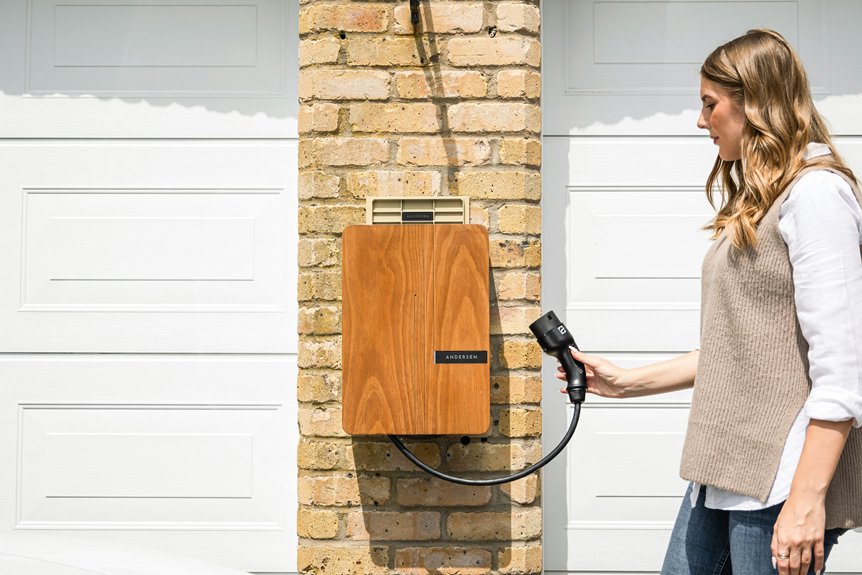If you notice your garage door isn’t opening smoothly or you see frayed or uneven cables, it’s time to consider fixing them. Cables play an essential role in the door’s operation, and addressing issues early can prevent more costly repairs down the line. However, because working with garage door springs and cables can be dangerous, knowing the proper steps is vital. Let’s explore how you can safely and effectively restore your garage door’s functionality.
Recognizing Signs of Cable Problems
Because garage door cables are vital for safe and smooth operation, it’s important to recognize when they might be failing. One sign is frayed or worn cable material, which indicates deterioration. You should also check for uneven door movement or if the door is stuck halfway. Proper cable length measurement is essential—if cables appear too loose or too tight, they may be mismatched or damaged. Faulty cables can cause dangerous sudden snaps or unstable door operation. Regular inspection of cable material and measurement helps catch issues early, preventing accidents and costly repairs. Additionally, professional garage door services can perform comprehensive assessments to ensure your cables and system are functioning correctly, maintaining safety and reliability. Stay alert to these signs to maintain a safe, functional garage door.
Gathering Tools and Safety Equipment
Before you start working on garage door cables, gather the necessary tools and safety equipment to guarantee a safe and efficient repair. You’ll need a sturdy ladder, pliers, and screwdrivers for cable adjustments.
Wear safety gloves and eye protection to prevent injuries. Have garage door lubrication spray ready to assure smooth operation afterward.
If you need to perform cable tension adjustment, use a cable tension gauge or a level to measure proper tension.
Always work with the door closed and secure it with clamps or locks to prevent accidental movement.
Proper preparation ensures your repair is safe and effective, reducing the risk of injury or improper adjustments.
Releasing Tension Safely From the Garage Door Springs
Releasing tension from garage door springs is a critical step that requires careful attention to safety. Before you begin, verify the garage door is securely supported and disconnect the opener.
Carefully release the tension by gradually loosening the spring adjustment, avoiding sudden movements. Once the tension is relieved, inspect the cables for wear and apply cable lubrication to keep them moving smoothly.
Proper spring adjustment helps prevent unnecessary stress on the cables and extends their lifespan. Always wear protective gear and proceed slowly, as springs can store significant energy.
Taking these precautions ensures you release tension safely and set the stage for successful cable repairs.
Removing Damaged Cables and Preparing for Replacement
To remove damaged garage door cables safely, start by ensuring the tension has been fully released from the springs and the door is securely supported.
Perform a thorough cable inspection to identify all signs of fraying, corrosion, or wear.
Carefully loosen the cable end fittings using the appropriate cable replacement techniques, such as gripping with pliers or using a cable hook.
Remove the damaged cables, taking note of their routing and attachment points.
Keep track of hardware for reuse if possible. Proper removal prevents accidents and makes replacement easier.
Once the damaged cables are out, you’re ready to proceed with installing new, properly tensioned cables.
Installing New Garage Door Cables Correctly
Installing new garage door cables requires careful attention to detail to guarantee proper tension and safety. Start by selecting the right cable type, such as torsion or extension cables, based on your door’s design.
Ensure the cables are properly threaded through pulleys and securely attached to the drum and spring system. Correct installation prevents uneven tension, which can cause operational issues.
Remember, cable maintenance is essential; inspect for fraying or corrosion before installation. Properly installed cables keep your garage door functioning smoothly and safely.
Take your time to double-check connections and tension, avoiding shortcuts to ensure long-lasting, reliable performance.
Testing the Door and Performing Final Safety Checks
After securing the new garage door cables, it’s important to verify the door’s operation thoroughly. Open and close the door smoothly, listening for any unusual noises that might indicate issues.
Check the balance of the door; it should stay in place when partially open. Perform cable tension adjustments if needed to ensure even movement.
Lubricate moving parts like rollers and hinges to reduce friction.
Test safety features such as auto-reverse and photo-eye sensors. If the door doesn’t operate smoothly or safety features fail, recheck cable tension and lubrication.
Proper testing guarantees your garage door is safe, reliable, and functioning perfectly.
Conclusion
Once you’ve replaced the garage door cables, take a moment to test the door’s movement and safety features to ensure everything operates smoothly and the door opens and closes evenly. Lubricate moving parts and double-check that all safety mechanisms are working correctly. Regular maintenance helps prevent future issues. For professional assistance with garage door repairs, To schedule your appointment with Twin City Garage Door, call us today at (336) 837-7354 or visit us online at Twin City Garage Door. With careful attention and proper safety measures, your garage door will stay reliable and safe for years to come.

